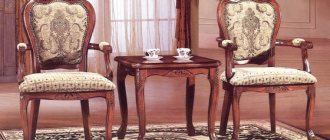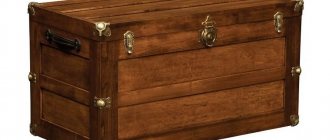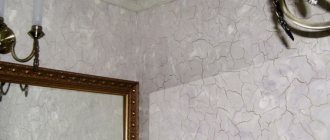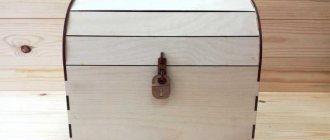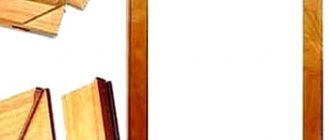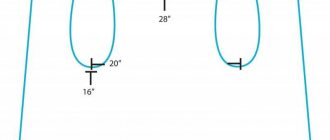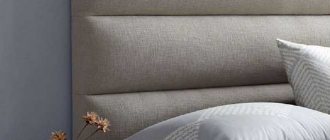Criteria for choosing materials for reupholstery
To transport chairs with your own hands, you need to prepare two sets of materials: make a soft backing and directly for the decorative parts on the seat and back. In both cases, the main indicators are density and structure. If you don't have any suitable leftovers on hand, you can purchase fabrics and upholstery from furniture stores.
For soft base-substrate
From expensive natural materials, restorers choose:
- cover in the form of rolls or plates;
- dry seaweed;
- sackcloth;
- tell jokes;
- horsehair.
Do-it-yourself typing
If you want to drag part of a kitchen set, then synthetic analogues are more affordable in price and operation. The soft interior of the seat and back of the chair is made of polyurethane foam, foam rubber, furniture latex is also suitable, it quickly restores its shape when compressed and stretched.
That's right, if the density of the materials ranges from 30-35 kg/m³, the resulting waist will be quite soft. Polyurethane foam and foam rubber are offered in the form of large sheets, on average 100x200 cm, one of which is enough to update the entire set. Furniture latex is made to order with individual parameters. In terms of durability and performance, polyurethane and latex benefit from this, as they last over a decade, show little wear, minimal puncture, and provide excellent shock absorption. Foam rubber attracts at an affordable price.
The backrest in the soft part should have a thickness of at least 3-5 cm, depending on the expected result, for a session this figure exceeds 7-8 cm. If there are no tapes or springs on a strong plywood base, then the thickness of the seat should be increased to 10-11 cm , and 1 cm of polyester on top to extend the life of the restored chair.
Spunbond can be stretched over polyester padding, a durable non-woven structure made from a mixture of polymers using the spunbond method. The economical material significantly increases the service life of the seat. This layer is also provided in luxury furniture, so the soft filling does not wear out, it also prevents the upholstery fabric from slipping, thereby increasing the comfort of using the chair. The only drawback is the formation of static electricity if the chair is upholstered in natural silk or wool.
For upholstery
Before upholstering a chair with your own hands, you need to choose a high-density decorative material that can hold its shape. The texture must be resistant to mechanical stress and wear; it is desirable that its surface is easy to clean and retains its original color for a long time.
The table shows a comparison of the most popular options:
EssenceProsminus coating type
| Leather | A natural option that does not cause allergic reactions, the right choice for connoisseurs of environmentally friendly solutions. Leather upholstery is offered in a wide range of colors and textures. | The material is easy to use, as it lends itself well to molding and mechanical stress. Has a presentable appearance. | With significant temperature changes, there is a high probability of breakage and deformation. Requires careful care. In economic terms, it is short-lived. |
| Leatherette | Attracts with a nice price and a variety of options. Leatherette is often used to create interiors in cafes and restaurants. | Upholstery with artificial leather is not labor-intensive and budget-friendly; it allows you to adapt to any style. | The solution does not have a long shelf life and wears out quickly. |
| Jacquard | Consists of single-color fibers or multi-colored threads. Has a characteristic relief design. | Durability, presentability, reliability, high strength. | The material is heavy, unruly and requires care. |
| Velvet | Soft, wrinkle-free fabric with short pile can be stretched. | The option is easy to work with and attracts with its spectacular appearance. | With insufficient care, the coating quickly fades and begins to shine. |
| Tapestry | it is characterized by a dense, rough texture consisting of a three-layer weave of threads. | It is highly durable, available in different models, this surface is easy to clean from stains and wash off. | In the sun it fades and wears out quickly. |
| Herd | Short pile fabric based on cotton and polyester. The base includes a thin layer of glue. | The material is low maintenance and shows durability. | High cost of the solution. |
| Chenille | The pole is enclosed in a spiral consisting of two threads. This option feels like velvet. | Budget and reliability. | Stubborn stains from the surface are difficult to remove. |
When it comes to restoring children's furniture, it is better to give preference to hypoallergenic materials. Lightweight solutions are not suitable here, as they will quickly lose their aesthetic appearance.
Required Tools
Having decided on the upholstery fabric for the chair, we prepare the tools that we will need: a sewing machine, an anti-stapler for removing old staples, thick cardboard, a brush, PVA glue, a set of screwdrivers, pliers, a furniture stapler, staples or a hammer and nails, a centimeter or tape measure, scissors , chalk, ruler, pencil.
Tools for upholstering chairs.
What materials are needed? Firstly, the fabric. It is better if it is jacquard, tapestry or flock - they are good quality, strong enough, and do not wear out for a long time. Before making a purchase, we take measurements and add 15-20 cm for hem and upholstery height. Secondly, filler. The most acceptable option is sheet foam rubber with a thickness of 4-5 cm and a density of 30 to 50 kg/m3. Bulk materials are completely unsuitable. Thirdly, padding polyester. It is used as a stabilizer, placed between fabric and foam rubber. The material glides along it easily, stretches in one moment and without wrinkles.
To determine the size of the cut to buy, measure the seat and add 15–20 cm to allowances on each side.
Suitable type of upholstery fabric for the chair
The type of upholstery fabric depends on where the chair is located and for what purpose.
If chairs are in the kitchen or kitchen stools need to be upholstered, using natural upholstery materials is probably not practical, especially if there are children or pets in the house. All kitchen surfaces and objects are more sensitive to severe dirt, which cannot be withstood by either wet or dry cleaning.
Some products can permanently ruin upholstery, as well as the art of training family members, not to mention dog teeth and cat claws.
The following requirements apply to fabrics for upholstery of kitchen chairs and stools:
- Waterproof;
- Resistance to mechanical stress;
- Inability to fold cards
- Power;
- Fire safety;
- Ease of maintenance.
Synthetic materials have all of the above characteristics. May be:
- Leatherette, for example Arpatek, is the economical “king” of furniture upholstery;
- Leather;
- Faux leather.
Chairs in the interior of your home – 50 photo ideas:
PreviousChairsFrom stool to transformable chair - learn how to make chairs with your own hands
Next
ChairsHow to make a folding chair with your own hands
Photo of the process of reupholstering chairs
Where to begin
First, you need to get rid of the old upholstery and filling once and for all. Only the springs, if any, should remain.
Secondly, carefully inspect the product to be remade. Its frame must be strong and stable, otherwise all the work will be done in vain. It is recommended that along with changing the upholstery fabric, you also change the entire chair.
To do this, you need to sand the surface to eliminate all scratches and unevenness, rinse the product thoroughly, tighten up loose parts, replace fittings, apply a primer (putty or white paint), paint and seal the result with varnish.
Thirdly, all the necessary tools and materials are prepared, which include:
- Fabric for reupholstery;
- Seat filler;
- PVA glue;
- Centimeter or long ruler;
- Cardboard pattern or plywood base for seating;
- Furniture stapler or small nails;
- Screwdriver, screws;
- Scissors or stationery knife;
- Pencil, soap or crayons (for measuring fabric).
An important point is the choice of suitable upholstery for upholstering the chair, which should be as dense and strong as possible. Also, upholstery fabric should be easy to clean from various types of dirt using a sponge or brush.
So, you can choose from tapestry, wool, chenille, artificial and natural leather, jacquard, satin. The required size is calculated by the formula: area of the upholstered area + 15-20 cm around the entire perimeter on the bends.
As for the filler, it should have a density of 30-50 kg/m3 and a thickness of at least 4 cm. Foam rubber, a soft, durable, non-creasing and non-deformable material, is considered optimal. Sheet polyurethane foam and latex are also used.
Batting and padding polyester are used extremely rarely, as they do not hold their shape and quickly sag. Under no circumstances should you stuff the seat with bulk materials (polyurethane balls, buckwheat husks, etc.).
Technology and stages of work
Transporting a chair yourself involves several steps: first you need to clean and evaluate the frame, then you can start working on a new project.
Removing old upholstery
An important step in restoring the chair is releasing the support frame. This is where a special tool comes in handy, with which you can easily remove old furniture staples. Staple removal tools can be found at woodworking and hardware stores.
Step by step guide:
- You must carefully place the edge of the regulator to the center of the holder, then carefully lift the device, pressing on the frame.
- When one end of the fastener is completely free, grab it with pliers and pull out the staple.
- After removing all the fasteners, you need to remove the fabric and soft padding to expose the base. You can then remove the material from the back.
The upholstery should not be removed with great effort; there is a high risk of deformation and damage to the frame due to intense impact. The old fabric must be removed in stages, systematically moving from the edges to the center.
Dismantling the frame
Use a rubber mallet to disassemble the wooden frame of a kitchen chair or stool. It needs to touch the areas where the parts are connected; in this case, the frame will quickly break up into separate components in the form of a seat, back and legs. The condition of the parts can be assessed by the presence of scratches, chips, mold, dents; if there are rotten areas, the parts need to be replaced.
Be sure to inspect all fastener areas to promptly remove unstable fasteners. All parts are thoroughly cleaned and glued back together.
Assembling the soft backing
The size of the soft padding for the seat should correspond to the width and length of the base of the chair; here it is necessary to leave 1.5-2 cm around the perimeter in the form of allowances for future seams. Subsequently, if excess matter is formed, all protruding ends will be easily cut off.
Guide to action:
- Pre-cut directly onto the fabric or cut out a template from paper. Depending on the shape of the chair, you can create a soft round or rectangular pillow.
- It is better to trim the workpiece with tailor's scissors; their sharp sharpening allows you to get a smoother edge.
- The soft support must be attached to the base with glue and allowed to dry completely for a quarter of an hour.
- The top of the product should be lined with a small layer of polyester insulation.
Restorers prefer to use dried herbs or horsehair as a substrate, since dust mites do not grow in them and the tampon retains its properties longer.
Back upholstery
This is the most important stage, since the practicality and decorative capabilities of the restored furniture depend on it. It is necessary to ensure that the narrowest stretches of the selected material, creases and creases are not allowed here. When securing the fabric to the frame, the hammer must be used carefully, maintaining strength so that it can be replaced with a hammer.
Upholstery assembly sequence:
- The fabric should be secured in the central zone in two places: back and front.
- Next, you need to provide tension and secure the material on the right and left.
- Maintaining an even distribution of the load, the fabric is attached to the sides. The same manipulations are repeated front and back.
DIY chair back
Using nails for wallpaper is more labor-intensive than working with a furniture stapler. The pins must be short, otherwise they will damage the soft support; they are used in tandem with a dense fabric lining.
Final restoration work
The restoration of the backrest is carried out in two stages: first it is covered with fabric, then it is covered with a paint coating composition. If cracks are identified, they are filled with putty or sealed. The upholstery is first pulled to the backrest, the fabric is fixed with a stapler, moving from the center to the perimeter. Foam rubber is glued to the front and the fabric is fixed with a margin along the edge.
Excess fabric is cut off and used as decorative tape to disguise nail heads or staples. The back can be varnished or varnished, in which case acrylic-based mixtures are recommended, which, unlike water-based compounds, last a long time and help maintain the integrity of the wood, preventing moisture and fungal infections.
Preparing for work
Purchase upholstery material, filling, and thick paper for the pattern.
You will need PVA (construction) glue or another varnish if the wooden parts have lost their shine. If, after disassembling the frame, the hardware has deteriorated, purchase self-tapping screws, staples for a stapler, and colored crayons. Prepare tools :
- tape measure from 3 m, a simple pencil, a square for checking right angles;
- electric drill, wood saw, hard and sharp knife;
- screwdriver, Phillips and flathead screwdrivers, pliers, clamps, stapler, anti-stapler.
To work, you need a sewing machine; the parts are connected using strong threads. The contours of the parts are outlined on the fabric with dry soap or chalk.
Preparatory work for reupholstering the chair seat and backrest:
The updating process begins with removing the upholstery . The chair is turned over, dismantled and the old fastenings are removed. These could be staples or screws. An anti-stapler is used to remove the staples, and the hardware is unscrewed with a screwdriver or a hand screwdriver. Care is important in the work so as not to damage the wood of the frame.
Remove the fabric and remove the filling. If the soft layer is still in good condition, it is reused. If the edges of the fabric are additionally glued, the composition is softened with steam (a hose is put on the spout of the kettle, then the other end is brought to the workplace. The second option is ironing with an iron with a steam generator function.
Check the integrity of the base. Tighten the screws at the loose joints, take them out and re-glue the seats of the legs. Repair crossbars, replace them if they are broken or cracked.
If the bottom of the chair is lined with plywood, it can be replaced when reupholstering the furniture.
How to reupholster chairs at home with your own hands
If you decide to adapt the chairs yourself, be prepared for the fact that in addition to the planned work, additional measures will be required. Often the cracks are hidden under the coating or the grout needs to be replaced. Therefore, taking this opportunity, you can not only re-upholster the chairs, but also secure them. Make changes to the design or design as necessary.
If the upholstery looks faded or is torn in places, new upholstery will save the day.
The process can be divided into several successive stages:
- Before starting work, you should decide on the future design and construction, assess the condition of the chair and the amount of work to be done.
- Based on the planned activities, prepare the materials and parts needed for replacement, as well as tools.
- Direct reupholstery and reconstruction.
If some parts are badly damaged, you will have to make new ones according to the old schemes.
Preparing materials and chairs
The list of materials for each specific case will be different. But there is a basic list of raw materials that will be needed in each specific case:
- upper fabric, upholstery - selected in color and quality, taking into account your wishes and apartment design;
- filler - this can be an independent spring block or soft seals;
- sheet of cardboard for layouts;
- BF or PVA glue.
If you have already decided what color the upholstery will be, you can paint the frame to match.
preliminary preparation of the chair itself is also required:
- Disassembly - Carefully open and remove the old trim mounting brackets.
- We check the integrity of the frame, tighten loose joints, and seal cracks.
- Based on the configuration of the seat (back), we cut out a pattern from cardboard and cut out upholstery material for the upholstery.
In order for the chair to stand upright and then be used for a long time, you need to take all the measurements correctly, choose the right fabric, and decide how thick the filling layer should be.
Filler selection
According to their characteristics, the seat padding of upholstered chairs is divided into two types:
- Spring - consists of independent spring blocks with layers of soft raw materials. The blocks ensure that the shape of the seat is maintained.
- Without springs: does not contain additional metal elements.
Another important detail is the choice of filler.
Synthetic padding polyester, latex, batting are suitable, but sheet foam rubber is best suited. The most popular padding materials today are:
- polyurethane foam;
- natural latex;
- holofiber;
- expanded polystyrene;
- Periotec;
- had tried;
- synthetic winter.
When choosing a filler, you should not rely solely on the cost of the material if you do not want to end up with cracked chairs that have lost their attractiveness in the near future.
The most common covering is textile, and here the choice is wide: chenille, flock, jacquard, microfiber, tapestry.
Re-upholstery process
All preparatory stages have been completed, you can proceed to reupholstery. Let's start with the seat. Glue the filler to the top side. After the glue has dried, cover the seat with the upholstery material, wrong side up, with the padding facing down. Align to an image or design.
It is better to cut the fabric with a margin; if the piece is smaller than necessary, it will not be possible to correct the situation.
We constantly wrap the edges of the upholstery on the back side of the seat and nail it with staples at intervals of 1-2 cm. The fabric should be stretched evenly, avoiding folds. Holding tension should not cause deformation of the filler. Trim any excess upholstery. The back should be tightened in the same way if it is soft. After that, all that remains is to assemble the chair and make the furniture. The bottom of the seat and the back of the backrest can be covered with fabric sewn along the edge.
The seams can be decorated with braid, lace, beads or rivets with decorative caps.
As you can see, a little diligence, imagination, desire and even the most ordinary chair can be turned from an ugly duckling into a beautiful swan. The main thing is to approach the selection of the necessary materials correctly, think through everything in advance and without problems, and slowly turn what you want into reality.
You can come up with your own original and beautiful way to change the design of the chairs.
Nuances of backrest restoration
Restoring a chair back is a two-step process:
- Covering with material;
- Applying varnish.
Any cracks found should be filled and sealed.
Step-by-step instructions:
- Stretch the upholstery on the back surface of the chair.
- Secure the material with a stapler, moving from the central part to the edges.
- Glue foam rubber on the front.
- Secure the fabric with piping along the edge.
- Then trim off the excess material.
- Decorate the upholstery with braid, thereby hiding nails or staples.
- Apply varnish or paint with acrylic paint to the surface of the chair. But it is not advisable to use water-based paints, as they will quickly wear off.
Re-upholstering an old chair with your own hands is a completely doable task.
Features of re-tensioning the base with belts and a snake spring
Before reupholstering a chair with a frame base, it is necessary to find out the essence of the belts: in modern furniture they are rubberized synthetics, in older models of chairs the belts are made of thick fabric like tarpaulin. To secure them to the frame, you can use staples or nails; a strip of thick fabric is placed under the latter.
When restoring furniture, it is advisable to use a belt or strip of the same width, this will make it easier to maintain the original number of longitudinal and transverse components. If the density and softness of the seat does not suit you, you can add or reduce the number of tapes and adjust their width. The optimal distance between these parts is 3 cm.
Not only elastic furniture belts are suitable here, but also dense belts such as towing and harnesses. The first option is elastic when landing, the second remains rigid. In any case, it is not so much the tapes that are responsible for the softness and comfort of the chair, but soft materials, such as foam rubber. If an old chair or stool is equipped with springs, then restoring it will be more difficult; it is easier to mount the frame with new tapes. An alternative to belts can be modern snake springs, they are also elastic when landing.
Subtleties of fixation on the frame
The straps are attached to the frame approximately in the center of the bar. The elastic band is secured in reverse with 3-4 staples, then wrapped around and secured with many other components. The tape is first tensioned, then secured on the other side. The attachment point may have a significant thickness, this is normal; this area will be covered with foam rubber on top and will not be felt.
Do-it-yourself restoration of a chair should be carried out in stages and with certain efforts: the tension on the back should be at least 9 kg, on the seat - from 12 kg. At home, this indicator can be measured using a steelyard; restorers offer the following master class on tightening ribbons:
- One end of the belt is secured using the two-step method described above.
- The steelyard hook clings to the other end of the tape; it must be pulled until the arrow on the dial points to the desired number.
- A marker is placed on the belt.
- Therefore, when securing the second end, you should be guided by the obtained length of the element.
This procedure is repeated alternately with each longitudinal and transverse strap, especially if the back or seat is uneven. Before cutting, it is necessary to leave the necessary margin for turning and securing the end of the tape, on average this is 3-5 cm.
The straps cannot be tightened with both hands, if you want to make the sizing process easier, you can buy special strip pliers with holes that allow you to engage the balancer hook.
How to restore a chair back
Repairing the back of a chair starts with the frame. We disconnect the parts, remove the old coating, and sand it. If there are cracks, fill them with glue using a syringe, you can apply putty. If desired, repaint the chair in a different color or simply varnish it. When all the parts have dried well, we connect them.
If there is upholstery on the back, the material and filling must be replaced.
First, we attach the back part of the back with a stapler, stretching the material from the middle to the corners. Then we glue foam rubber in front and attach fabric with a sewn-in edging. It covers the staples so that they are not visible. By restoring old furniture, you will not only extend its service life.
You will have an original piece of furniture in your home that no one else has.
The process of reupholstering a chair with new fabric
Repairing a chair with your own hands can be done in different ways, but still the basic step-by-step instructions will look like this:
- First, the chair is disassembled if its upholstery is inserted into the frame. If the upholstery extends beyond the outer edge of the chair seat, it will simply begin to peel off.
- Then a new canvas is cut out. Before doing this, you need to clearly measure the overall size. Please note that in order to properly upholster the back and seat, you need to take extra fabric so that there is enough to wrap the edges and nail at the bottom.
- Also, to keep the chair soft, you need to consider what material is best for the support and cut the exact same shape as the chair seat.
- Cut out the same backing from cardboard and glue some soft material on top of it.
- Attach the cardboard to the base of the chair in any way you like. Most often, a cardboard layer is used to prevent padding polyester or other selected material from tearing.
- Then everything on top is coated with a cloth.
- The disassembled elements of the chair are assembled.
In order for the chair to stand upright and then be used for a long time, you need to act carefully. It is this procedure that helps to repair products the way professionals do it. But this step-by-step instruction gives a general idea. If we talk about the technological subtleties that craftsmen use in their work, it is worth considering them in more detail.
Removing old fabric
When it becomes necessary to reupholster a chair, the old fabric is first removed. In the vast majority of cases, it is fixed with a stapler, which drives the staples into the wood or wood material. Obviously, the best way to do this is to use a device that allows you to remove these braces. Its edge is aligned with the center of the metal plate and is raised, pressing it against the frame. Then one of the ends of the bracket can be removed easily and quickly. And then, using pliers, the second part is pulled out.
Carefully open and remove the old brackets holding the case in place.
But if you don't have a staple remover, you'll need a knife with a thin but strong blade. True, this work will be more dangerous in terms of the possibility of injury.
Removing old upholstery
Furniture restoration begins with dismantling. How to properly remove old fabric? First of all, we unscrew the seat - we use a screwdriver to hook up the fasteners, remove the nails, unscrew the screws, and remove the metal pads. Use an anti-stapler or a flat-head screwdriver to remove the old staples.
We put the fasteners in a container, it may come in handy.
Then we inspect the base of the chair, if it is loose, it needs to be strengthened - fill the cracks with sealant or PVA glue, you can cover them with putty, tighten the weak points. We remove the old upholstery and carefully remove the foam rubber. If you didn't throw away the fabric you removed, use it as a pattern.
Remove the remaining foam and glue from the seat frame.
Let's start re-upholstering
For convenience, you can make a stencil from thick cardboard and use a utility knife to cut out the foam rubber for the seat to the required size. Afterwards we glue the filling to the plane of the seat.
You can use PVA glue or other glue suitable for furniture work. Give the glue time to dry. Using the same template, we cut out the blank from the upholstery material. Don't forget to leave a hem allowance of 7-10 cm around the entire perimeter.
Now let's move on to the actual upholstery. Lay the material face down on a flat surface. Then a layer of padding polyester, if you decide to use it, and then the seat itself with foam down.
We carefully bend the material, do not stretch it too much, and nail it with staples or nails. Try to make a more or less even line. It is better to start fastening from the center and spread evenly to the sides.
Having finished on one side, go to the opposite, do the necessary stretch, smooth out wrinkles if they suddenly appear. The distance between staples is 1.5-2 cm. But if shaped waves form on the side surface, then in this case you can hammer in staples or nails more often.
Pay special attention to the corners to make sure they are as neat as possible. If necessary, tap the staples with a hammer. The back is tightened in the same way.
You can use thinner foam for it than for the seat.
Then we attach the resulting parts to the chair frame. Your updated chair is ready. As you have seen, reupholstering a chair at home is quite feasible.
What determines the cost of reupholstery?
The cost of reupholstery services depends on various factors, but the main one is the cost of materials. Upholstering a pouf, chair, or sofa with furniture fabric is relatively inexpensive. But working with leather, tapestry, velor, jacquard requires large expenses.
Additionally, the price depends on the need to replace the packing and its material. Horsehair or seaweed, as well as working with them, are more expensive than foam rubber and cotton wool. However, price does not matter if it is necessary to reupholster an armchair or chair that belonged to a famous public figure, writer, or has historical value.
How to decide on color
It is important to carefully approach the choice of shade and texture of the future product. Here photographs of chairs from furniture catalogs, where you can find hundreds of upholstery options, will help you in your search. You also shouldn’t lose sight of your own wishes, the interior of the room, and the design of other pieces of furniture.
The color of the upholstery of a restored chair is usually dark. The most commonly chosen colors are brown, blue and burgundy. However, for light frames, fabric of a golden or beige tone is selected. Often preference is given to more intense colors, especially if the furniture is intended for children's rooms or living rooms in the pop art or city style.
An interesting solution would be to use several materials on one product: for fabric mosaics in one place or for upholstering different areas of a chair.
Most popular upholstery fabrics
Fabric for upholstery of chairs, which one is better is difficult to determine right away. There are a lot of options, each of which is distinguished by the originality of the external plan and the properties of wear resistance and moisture resistance.
Chenille
Chenille means "caterpillar" in French. The fabric received this name because of its unusual appearance - the fibers are tightly twisted, with additional fibers woven into them. The canvas turns out textured and looks very rich.
You can cover chairs with fabric of this quality in the kitchen and living room, since the composition contains synthetic and natural fibers in varying proportions. Additional advantages of the fabric are:
- Long-lasting color that does not wash out or fade in the sun.
- The texture is soft, elastic, pliable and easy to work with.
- Thanks to its composition and density, it retains its attractive appearance for a long time.
Chenille for upholstery
There is also a drawback - chenille strongly absorbs moisture and liquid, while it takes a long time to dry.
Jacquard
Jacquard is a relatively inexpensive material that has many advantages:
- The fiber weave is dense.
- The fabric contains synthetic and natural fibers.
- Textiles do not deform, do not fade in the sun, and do not wear out over a long period of time.
Note! Jacquard is a premium fabric. Especially if the composition includes a lot of natural raw materials.
Jacquard for furniture
Jacquard is easy to clean from dirt, so it is considered a fairly hygienic textile. Unfortunately, it is difficult to choose truly high-quality material.
Thermo-Jacquard
A “beginner” market absorber of fabrics for arranging the surfaces of diverse furniture. Material Features:
- Does not absorb moisture.
- Easy to clean from dirt;
- Can be used for a long time.
A unique pattern that is applied in several layers, creating unique visual effects.
Scotchgard
Special impregnation for various types of textiles. Thanks to this protective layer, the fabric does not absorb moisture and greasy substances. This type of layer is relevant on fabrics that will cover furniture in the kitchen or in the kitchen.
Flock
Flock is an ideal option for a home with children. The fabric is easy to clean even from difficult types of dirt. At the same time, the pattern is made simply, since the fibers do not crumble on the cuts.
Flock to update
A short soft pile is glued to the sweaty fabric, which gives the appearance of the flock an aesthetic appeal. You cannot clean flock with products that contain solvent, bleach, or chlorine—the fluff will come off.
You might be interested in this All about satin jacquard, fabric for bed linen
Velours
Velor chairs have several properties:
- The soft texture of the material does not crush after use.
- Huge variety of prints and colors.
- An inexpensive option for an aristocratic type of upholstery for furniture.
The disadvantage is the rapid loss of lint, which then remains on the clothes. Do not use many cleaning products as the textiles may fade.
Microfiber
Microfiber is considered a new generation textile. This type of furniture finishing is used due to its resistance to mechanical stress of varying degrees. In this case, weaving is carried out by combining ultra-thin threads of synthetic origin. Ideally combined with natural expensive materials.
Microfiber for furniture finishing
Alcantara
Chair upholstery made of Alcantara is becoming more and more common, since the material is an artificial analogue of suede. At the same time, the material is more effective:
- Keeps warm in winter, does not heat up in summer.
- Maintains an attractive appearance for a long time.
- Affordable price.
- Various colors.
If you go online, you can find a lot of designer furniture that is upholstered with Alcantara.
Arpatek
Arpatek is the highest quality leather substitute, which displaces many other textile analogues. There are many varieties of arpatek: python, varnish, crocodile and so on. You can choose the right option for any interior. Additional features:
- hypoallergenic;
- strength;
- low cost;
- does not get dirty.
Arpatek for furniture
If you upholster a chair with arpatek, it will immediately make the furniture more elegant. An ideal option for a high-tech interior.
Tapestry
Tapestry is an ideal upholstery material that is produced on the same principle as jacquard. But the weaving fiber contains a larger number of threads. The textiles are the most natural in composition, although acrylic threads are woven into the fabric to increase density. Sometimes you can find round weaving.
Gozhka
Matting is a good analogue of chenille. Covering with matting is most often done, since the material has a lot of positive properties:
- The weave is coarse and large compared to chenille.
- Usually 2 types of fibers of similar shade are intertwined in a checkerboard pattern.
- Does not absorb odor and does not fade in the sun.
- You can clean the surface with a vacuum cleaner or soapy water - dirt does not eat into the threads.
Chair matting
It recreates the effect of a natural surface, therefore it is often used for finishing furniture that will be part of an eco-style interior. It is not advisable to upholster chairs in a house where there are cats - pets love to sharpen their claws on such textured fabric.
Velveteen
The corduroy finish looks aristocratic and expensive. The fabric is soft to the touch with a variety of rib types. The color scheme is different, and various prints are often found. It retains its original appearance for a long time, but reupholstering such material involves a lot of inconvenience - small debris clings to the pile, it is difficult to clean from dirt, and dust quickly accumulates.
Artificial and natural leather
Leatherette and genuine leather are the most popular options for transforming furniture. There are many analogues of genuine leather that are of good quality and attractive appearance.
Leather for upholstery
artificial and genuine leather
Materials and tools for upholstering chairs
- Upholstery fabric of your favorite color and texture;
- Black fabric for covering the back of the seat;
- Soft batting or foam rubber (if leaky);
- Hot-melt adhesive, hot-melt gun (for securing the batting, if necessary);
Materials and tools for upholstering chairs
- Pliers;
- Scissors;
- Phillips screwdriver;
- Flat screwdriver;
- Furniture stapler (construction).
